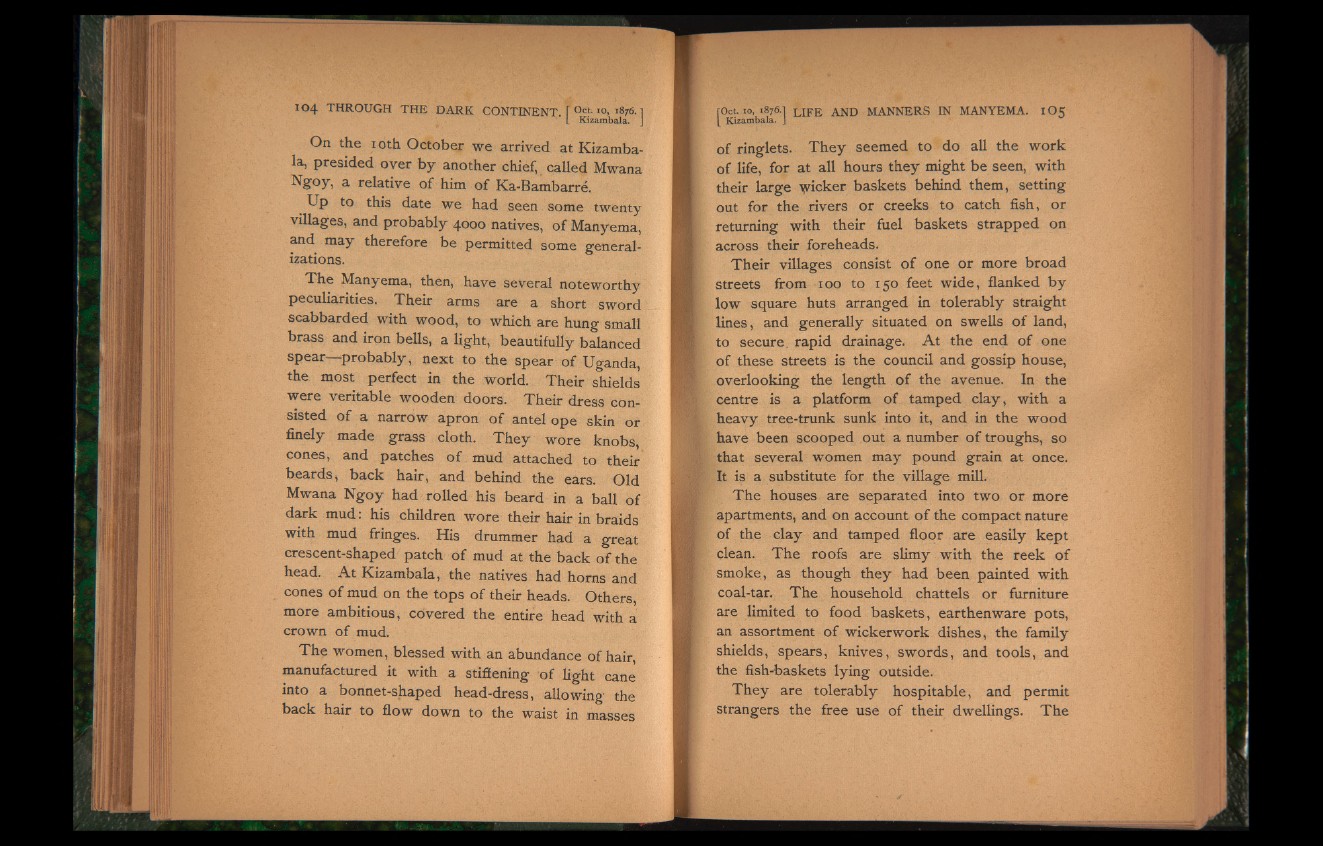
On the 10th October we arrived at Kizambala,
presided over by another chief, called Mwana
■^iaOy, a relative of him of Ka-Bambarre.
Up to this date we had seen some twenty
villages, and probably 4000 natives, of Manyema,
and may therefore be permitted some generalizations.
The Manyema, then, have several noteworthy
peculiarities. Their arms are a short sword
scabbarded with wood, to which are hung small
brass and iron bells, a light, beautifully balanced
spear— probably, next to the spear of Uganda,
the most perfect in the world. Their shields
were veritable wooden doors. Their dress consisted
of a narrow apron of antel ope skin or
finely made grass cloth. They wore knobs,
cones, and patches of mud attached to their
beards, back hair, and behind the ears. Old
Mwana Ngoy had rolled his beard in a ball of
dark mud: his children wore their hair in braids
with mud fringes. His drummer had a great
crescent-shaped patch of mud at the back of the
head. At Kizambala, the natives had horns and
cones of mud on the tops of their heads. Others,
more ambitious, covered the entire head with a
crown of mud.
The women, blessed with an abundance of hair,
manufactured it with a stiffening of light cane
into a bonnet-shaped head-dress, allowing the
back hair to flow down to the waist in masses
[Oct. IO, 1876.] LIFE and manners in MANYEMA. 105
[ Kizambala. J
of ringlets. They seemed to do all the work
of life, for at all hours they might be seen, with
their large tyicker baskets behind them, setting
out for the rivers or creeks to catch fish, or
returning with their fuel baskets strapped on
across their foreheads.
Their villages consist of one or more broad
streets from 100 to 150 feet wide, flanked by
low square huts arranged in tolerably straight
lines, and generally situated on swells of land,
to secure, rapid drainage. At the end of one
of these streets is the council and gossip house,
overlooking the length of the avenue. In the
centre is a platform of tamped clay, with a
heavy tree-trunk sunk into it, and in the wood
have been scooped out a number of troughs, so
that several women may pound grain at once.
It is a substitute for the village mill.
The houses are separated into two or more
apartments, and on account of the compact nature
of the clay and tamped floor are easily kept
clean. The roofs are slimy with the reek of
smoke, as though they had been painted with
coal-tar. The household chattels or furniture
are limited to food baskets, earthenware pots,
an assortment of wickerwork dishes, the family
shields, spears, knives, swords, and tools, and
the fish-baskets lying outside.
They are tolerably hospitable, and permit
strangers the free use of their dwellings. The